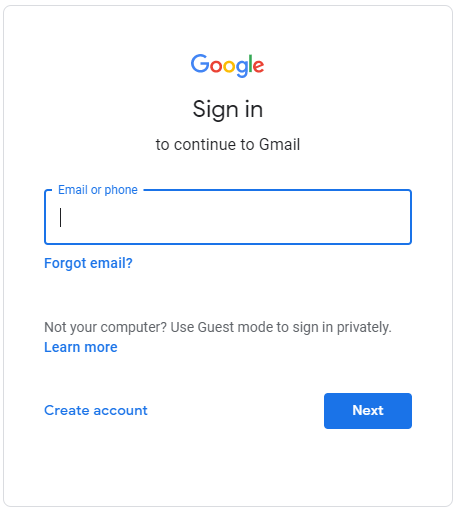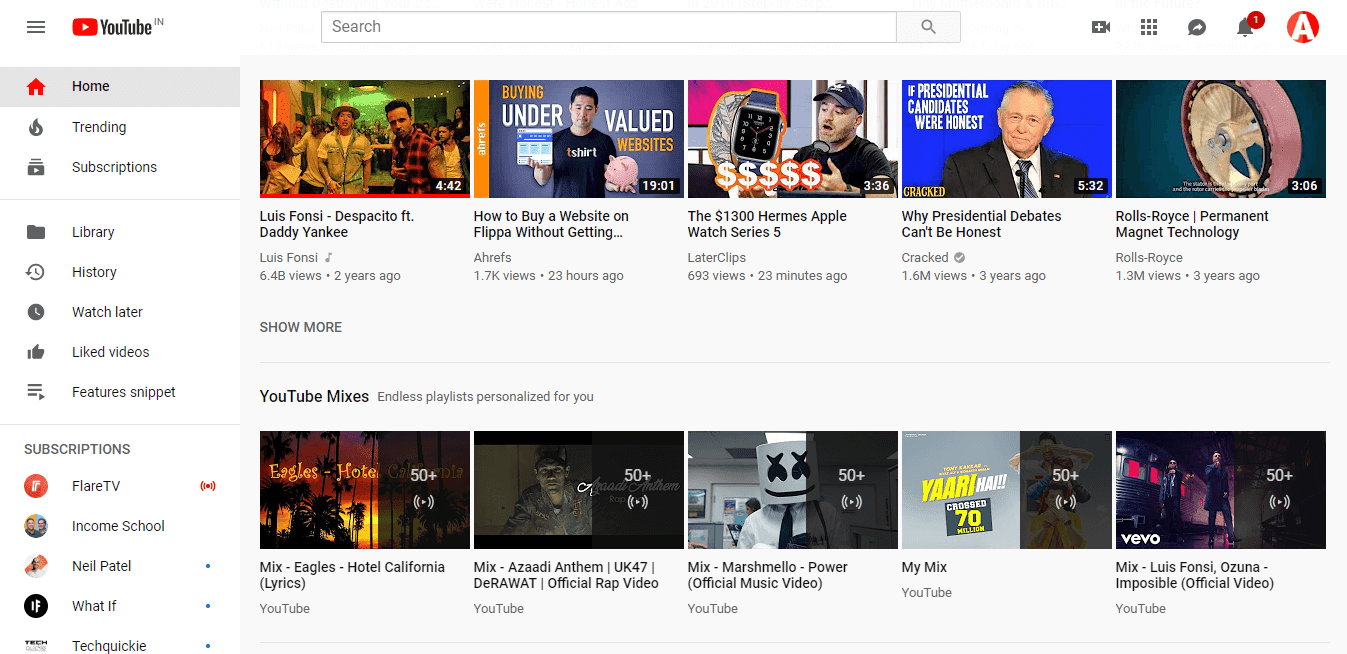
10 Steps To Improve Your Youtube Marketing Strategy [2020]
Let’s talk about YouTube. Chances are we have all spent a squandered afternoon watching one silly video after another. YouTube has always been a source of entertaining content, but it’s also staking its claim as an essential tool for marketers.
If you are concocting plans to start marketing on YouTube, you need to be sagacious about it. YouTube has about more than 50 million content creators producing videos regularly, so for your audience to take an interest, your content has to stand out. 1/3 of total time online is spent watching videos, and YouTube has more than a billion active users. The platform can be accessed in 76 different languages, accounting for 95% of the world’s population.
YouTube gives brands an unrivaled opportunity to promote their services, create an image, and always define keep pace with the requests of the target audience.
Video Content is ahead of other types of advertising:
- Sixty-four percent of users are more likely to buy a product after watching a video about it.
- Users stay on the page with a video, ninety percent longer than on the page without it.
- 59% of managers would rather watch a video than read a text.
- Posts on social networks with videos have an increase in views by forty-eight percent.
The majority of YouTube viewers aren’t huge fans of advertising, so you’ll have to think carefully about how you’re going to raise awareness about your brand while keeping viewers entertained.
This might sound intimidating, but with the right approach, it’s doable. By the time you’ve finished this 10-step guide to marketing on YouTube, you’ll have a good grasp of how to get started. We’ll be focusing on three key are as:
- Creating and optimizing your YouTube channel.
- Understanding your audience using data.
- Advertising on YouTube through YouTube ads and influencers.
Now, let’s jump in!
Step 1: Create an Account on Google
When you create your YouTube channel employing a regular Google account, only the Google Account holder can log into that channel. If you create your YouTube channel using a Brand Account, multiple authorized Google Accounts can log in concomitantly.
Creating a Google Account:
Click on “Create Account” at the basal of the page.

You’ll see an option pop up to create an account for yourself or to manage your business. Since your YouTube account will be for your business, choose “To manage my business”.

To officially create your Google account, enter your name and desired email and password before clicking “Next”. Then, enter a recovery email and your birthday, gender, and phone number. Note: Google requires all users to be at least 13 years old.
Lastly, agree to Google’s Privacy Policy and Terms of Service and verify your account with a code sent via text or phone call.
Now, the next step is...
Step 2: Create a YouTube Brand Account
The YouTube brand account is an option that gives your business a YouTube presence of its own. It is a separate account from your one that uses your company’s name, though it is still accessed through your personal YouTube account.
To access a brand account, you need to log in to YouTube using your credentials. Once you are logged in, click on your image or avatar in the upper right corner of the YouTube screen and click on ‘Settings’.
Click ‘Create a new channel’ in the settings screen that opens.
Enter a name for your YouTube business account and click ‘Create’ to start using YouTube under the new company name instantly.
Step 3: Study your audience
Your YouTube channel for business accords you with access to the Analytics tab, which contains stats related to your channel. You can find here for commensurable insights on your channel and your audience’s evolving behaviors, including your view, counts, revenues generated, and interaction rate across videos, etc.
The Analytics tab also contains data on your subscriber demographics.
Even if you think you know who your subscribers are, take into consideration what you find under the Demographics tab. This data will help you in reaching the right audience.
Keep track of the Watch Time and Demographics analytics to answer questions like:
- Where are your videos being viewed, and when?
- What age are your viewers?
Tracking audience analytics is a win-win. If your assumptions about your subscribers are confirmed, that’s great: you’re now certain you’re reaching the right audience.
Beyond quantitative metrics, you can also gain qualitative information. The whys and the hows about your audience by reading and managing the comments on your videos.
The YouTube Community Page is an underrated space for finding out about your audience. Located under the Community tab on your profile, you can interact with your subscribers directly. Post questions or create a poll to gain a deeper understanding of how your audience thinks.
Step 4: Examine your competition
Competitive analysis is indispensable if you want to get ahead of other businesses in your niche on YouTube. Fortunately, a lot of the information you need to identify potential opportunities is readily available on their channels.
Glance through your competitors’ YouTube channels and take note of which videos got the most and least views. Watch these videos get the awareness of what kinds of content your audience likes to watch and incorporate that into your content strategy.
As with your videos, read the comments on competing videos. Maybe your brand has received a mention. If so, make sure to respond so potential customers can see you are actively engaging with your community.
Step 5: Optimize your videos with SEO
Your YouTube videos are requisite to be optimized for search if you want to get the most out of them. But don’t worry if your first few videos fail to attain a lot of recognition. You can work on modifying and perfecting your YouTube SEO over time.
Here are some tips to get started:
Choose the right title with the right keywords
The initial step to optimizing a YouTube video is to pick an appealing title containing relevant keywords. You can use Google AdWords Keyword Planner for this.
Make sure the title is relevant to the video topic: nobody likes clickbait. If you can, try to include exact keywords matching common search terms: it will get you more clicks.
YouTube video titles can contain up to 70 characters; we recommend 60 or fewer so nothing’s cut off on the search pages.
When you upload a video, you can choose a freeze-frame or a screenshot to use as the thumbnail. Though, we will recommend making your own tailored thumbnail, as it will help your content obtrude.
Write a compelling video description

Your video description should contain a short explanation of what your video is about, as well as links to your website and social media accounts, and a list of hashtags.
Add hashtags to the video description
Hashtags make your content more searchable on YouTube.
Pick a small number of hyper-relevant hashtags rather than an extensive list. If you use more than 15 hashtags, all hashtags on that video will be ignored anyway, so be selective.
Ask viewers to subscribe
Sometimes, the easiest way to get what you want is to ask for it. There’s a reason every YouTuber ends their videos with a verbal call to “Like, share, and subscribe”—it works and takes zero effort.
Step 6: Upload and Schedule
Be professional and share content on a regular schedule. If you promise your subscribers, they’re getting a new video every Saturday at noon eastern, you have to commit to that, or risk losing their trust (and their views).
Step 7: Optimize your YouTube Channel
After you’ve optimized your videos, you will be required to optimize your YouTube channel itself. By delivering a consonant experience across your channel, you will be able to attain more views and will be able to convert those views into regular subscribers.
You can also add a list of Featured channels to your YouTube profile. Your list of featured channels accords you with your subscribers' easy access to other YouTube resources they might be interested in, adding more value to your page.
Step 8: Incorporate YouTube Advertising
Your YouTube channel isn’t the only place where you can deliver your content, if you have got the funds, you can also pay for YouTube advertising.
YouTube ads come in varieties, some of them are:
- Skippable video ads
- Non-skippable video ads
- Bumper ads
- Overlay ads
- Display ads
- Sponsored cards
Step 9: Work with influencers
Reach out to influencers who already know and trust your brand. Most YouTube fans are sagacious enough to recognize a paid partnership, but if the influencer is honest and upfront about their love of the brand, the “sponsored” detail won’t signify.
When it comes to these partnerships, let the influencer do the talking. The more control you try to exert over the partnership, the more you’ll impact the influencer’s brand, making the whole effortless genuine—and their followers will see it from a mile away.
Step 10: Analyze and Adapt
Maintaining and growing your YouTube channel requires constant monitoring. When you publish a new video, check YouTube Analytics for:
- Significant changes in subscriber count
- New or changing audience demographics
- Video playback locations and traffic sources
- Device reports (mobile, desktop, smart TVs, etc.)
This is the best way to learn exactly what your audience thinks of videos and your channel as a whole. You might even come by substantial suggestions about which video you should make next!


